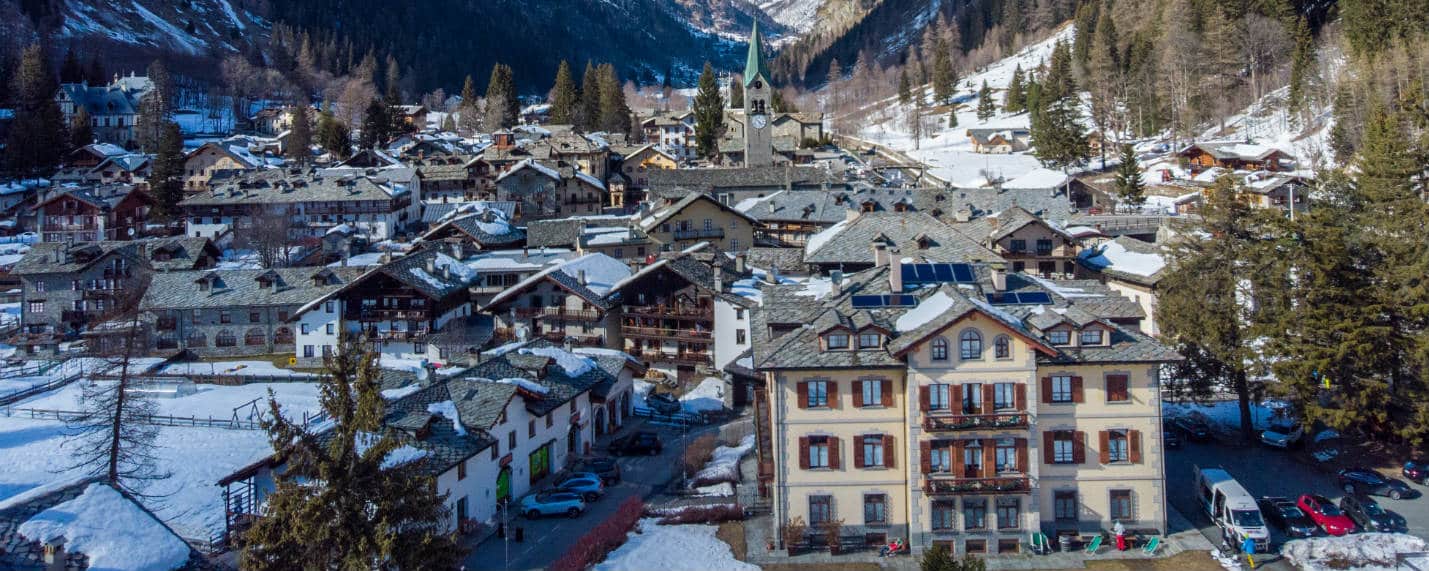Castel Savoia is a nineteenth-century villa dominating the Gressoney valley, a holiday destination much loved by Queen Margherita, since 1887, and by his wife Umberto I. The queen, following some stays at the residence of Baron Beck Peccoz, wanted to make build a residence for himself on the side of the valley below Col Ranzola, from which you can enjoy a wide panorama of the valley and the peaks of Monte Rosa. After some resistance from Umberto I, who preferred to stay in the Castle of Sarre for long hunting trips, Queen Margherita obtained permission to build her holiday home that she had designed by the architect Emilio Stramucci, who had already worked on the remodeling of the Royal Palace and other Savoy residences. The noblewoman, widowed in 1900 and now relegated to the sole function of queen mother, spent long holiday periods there until 1925, hosting illustrious members of the literature she loved to surround herself with, including the poet Giosué Carducci and the affectionate nephew, the young prince of Piedmont Umberto II. After the death of Queen Margherita in Bordighera in 1926, during her winter stay in Villa Margherita, the castle remained closed for a few years and was sold in 1936 to the Milanese industrialist Ettore Moretti who kept it almost intact. His heirs sold the castle to the Valle d’Aosta autonomous region in 1981.
The Castle is actually a large three-storey villa in an eclectic style, characterized by the five neo-Gothic towers. They are surmounted by spiers all different from each other, while the central tower, the highest, houses a covered terrace characterized by a cusp-shaped roof with dormers that guaranteed the view to the Royal Carabinieri on the whole property. The building was built with extensive use of local rocks and appears in all its austerity but the alternation of architectural modules, the multitude of windows, mullioned windows, mullioned windows and the variety of styles, give it a rather homogeneous and harmonious appearance.
A particularity distinguishes this residence, or the absence of the kitchens, which the queen herself wanted to have built outside the building, about thirty meters away, in the structure that since 1981 has housed the ticket office and toilets for visitors. The connection with the kitchens to transport the food was guaranteed by an underground gallery equipped with a double Decauville track, where the flowrates traveled their short journey on hermetically sealed electric trolleys up to an internal lift that brought meals directly to the dining room of the castle.
The location on the side of the valley in a position allows you to enjoy a wide view of the Lyskamm glacier and Monte Rosa. The building is also surrounded by a large park which houses a small pine forest and the rock garden at the foot of the building. Connected from the access road to the castle, there are also some housing structures: the Villa Belvedere, which served as a guesthouse, accommodation for the keepers, for the servants and for the escort of the Royal Carabinieri and the Romitaggio Carducci, dedicated to the memory of the poet and friend of the queen who stayed there.


